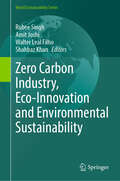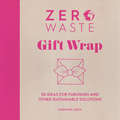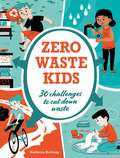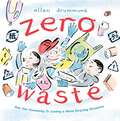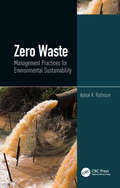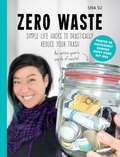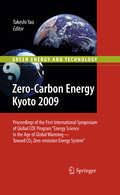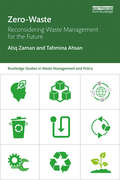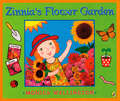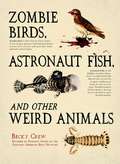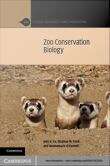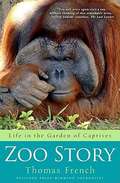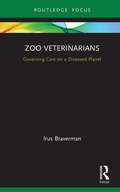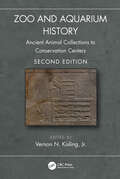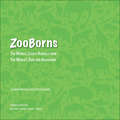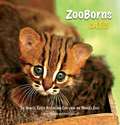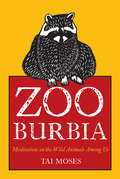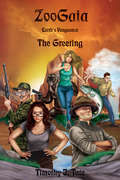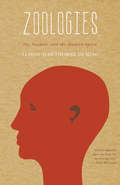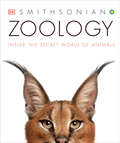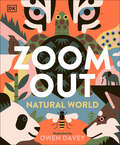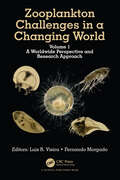- Table View
- List View
Zero Carbon Industry, Eco-Innovation and Environmental Sustainability (World Sustainability Series)
by Walter Leal Filho Shahbaz Khan Amit Joshi Rubee SinghThis book provides the latest research on zero carbon industry and its practical implications for eco-innovation and environmental sustainability for businesses in current scenario. In a zero-carbon industry, there would be profound, sometimes disruptive, changes in our economy compared to our current one. As the world approaches zero carbon industry by 2050, economic output will shift progressively (and permanently) toward those goods and services that do not emit greenhouse gases. Changes in these dynamics would ripple along entire value chains, transforming industries. Creating a zero-carbon industry will require fundamental changes in both our economies and societies. Taking eco-innovation and environmental sustainability seriously will be crucial to businesses, and companies are increasingly keen to signal this commitment. This book aims to illustrate a detailed exploration of the complex and interconnected domains of zero carbon industry, eco-innovation, and environmental sustainability. In addition to combining the academic expertise of emerging and established scholars from different academic fields, this book provides an integrated understanding of the topic on zero carbon emissions, eco-innovation, and environmental sustainability from a broader perspective by combining the work of established and emerging scholars. There is a need to fundamentally transform the zero carbon industry, eco-innovation ecosystem in order to achieve sustainability through the implementation of Industry 4.0 technologies such as artificial intelligence, Internet of things, blockchain, and cloud technologies. The book sheds light on various advancements in zero carbon industry, eco-innovation, and emerging technologies for the purpose of sustainability, and it aims to address the urgency of responding to the UN Sustainable Development Goals (UN-SDGs) as part of the global mandate.
Zero Waste Gift Wrap
by Christine LeechInventive ways to wrap presents that are both pretty and planet-friendly!Embrace zero waste living with this collection of sustainable gift wrap solutions including furoshiki, the traditional Japanese technique of fabric knotting. What could be nicer than receiving a present AND the beautiful scarf it's wrapped in!Whether you use a vintage silk scarf or create your own fabric with patchwork, piecing, and dyeing techniques—or reuse unwanted items to make quirky gift wraps—this collection is packed full of ideas for reducing waste.Other ideas include how to make present toppers made from unwanted fabric and yarn scraps—to finish off your gift wrapping with a flourish.
Zero Waste Kids
by Kathryn KelloggOur planet is in danger! It's time to make a difference to ensure its future by taking up the zero-waste challenge. Zero Waste Kids is full of fun ways to help you make sustainable choices to save planet Earth. Become informed about the crisis we're in but also, more importantly, take action through the 30 achievable child-friendly challenges to reduce waste, including craft activities and lifestyle changes to reduce, reuse and recycle your way to a better future.Filled with facts about the state of our planet, the environmental impact of over-consuming and the waste we produce and where it goes.Written by US author Kathryn Kellogg, a leading voice in the zero-waste movement, author of the adult book 101 Ways to Go Zero Waste, founder of the Going Zero Waste blog, featured in publications such as National Geographic, The Times, the Guardian, CNN.
Zero Waste: How One Community Is Leading a World Recycling Revolution (Green Power)
by Allan DrummondIn this fifth installment in Allan Drummond’s picture book series about green living, a town in Japan takes a stand against its throwaway past and shows that it really does take a village to make sustainable change.Kamikatsu, Japan is known worldwide for its sanitation innovations. This small community of 1700 people is leading the way in recycling and up-cycling, and as of 2022, had nearly achieved its goal of zero waste. Told in Allan's hallmark narrative style, Zero Waste is the story of a group of citizens who dared to break out of their comfort zone and make radical change for the good of their town and the planet. Through the eyes of two children visiting their grandmother, this inspiring addition to the author’s acclaimed Green Power series about everyday communities inventing exciting new approaches to green living shows that working together for a common cause has an impact that is lasting, meaningful—and fun!
Zero Waste: Management Practices for Environmental Sustainability
by Ashok K. RathoureZero Waste: Management Practices for Environmental Sustainability presents approaches for resource management centered on reducing waste and reusing and recycling materials. It aims to save energy by reducing energy consumption associated with extracting, processing, and transporting raw materials and waste, and also to reduce and eventually eliminate the need for landfills and incinerators. This book presents the various principles, methods, and tools that can be used to address different issues in the areas of industrial waste reduction and sustainability. It examines how to eliminate waste at the source and at all points of a supply chain, and how to shift from the current one-way linear resource model to a sustainable "closed-loop" system. Proposes strategies for businesses to reduce and reuse waste with a goal of reaching a zero waste status. Focuses on how mitigating waste and promoting recycling can save vast amounts of energy. Explains how the zero waste approach would be a key measure to ensure environmental sustainability and help to offset global climate change.
Zero Waste: Simple Life Hacks to Drastically Reduce Your Trash
by Shia SuEasy and Effective Strategies to Jumpstart a Sustainable, Waste-Free Lifestyle We have a worldwide trash epidemic. The average American disposes of 4.4 pounds of garbage per day, and our landfills hold 254 million tons of waste. What if there were a simple—and fun—way for you to make a difference? What if you could take charge of your own waste, reduce your carbon footprint, and make an individual impact on an already fragile environment? A zero waste lifestyle is the answer—and Shia Su is living it. Every single piece of unrecyclable garbage Shia has produced in one year fits into a mason jar—and if it seems overwhelming, it isn’t! In Zero Waste, Shia demystifies and simplifies the zero waste lifestyle for the beginner, sharing practical advice, quick solutions, and tips and tricks that will make trash-free living fun and meaningful. Learn how to: Build your own zero waste kitPrepare real food—the lazy wayMake your own DIY household cleaners and toiletriesBe zero waste even in the bathroom!And more! Be part of the solution! Implement these small changes at your own pace, and restructure your life to one of sustainable living for your community, your health, and the earth that sustains you.
Zero-Carbon Energy Kyoto 2012
by Takeshi YaoThe Global COE is setting out a zero-emission technology roadmap and is promoting socioeconomic studies of energy, studies of new technologies for renewable energies, and research for advanced nuclear energy. It has also established the Global COE Unit for Energy Science Education to support young researchers as they apply their skills and knowledge and a broad international perspective to respond to issues of energy and the environment in our societies. This book follows on the earlier volumes Zero-Carbon Energy Kyoto 2009, 2010, and 2011.
Zero-Waste: Reconsidering Waste Management for the Future (Routledge Studies in Waste Management and Policy)
by Atiq Zaman Tahmina AhsanThis book analyses ‘zero-waste’ (ZW) as an emerging waste management strategy for the future, which considers waste prevention through innovative design and sustainable consumption practices. Drawing on a diverse range of case studies from Australia, Bangladesh, Japan, New Zealand, Sweden, and the USA, this book explores why urban waste management systems still remain a major challenge for almost all cities around the world. Rejecting waste as an ‘end-of-life’ problem, Atiq Zaman and Tahmina Ahsan instead consider waste prevention through the ZW model, in which resources are utilized and consumed with minimum environmental degradation. In addition, the authors give extended discussion on why embracing the ZW concept will be beneficial for the circular economy (CE). Providing a strategic zero-waste framework and an evaluation tool to measure waste management performance aimed towards ZW goals, this book will be of great relevance to students, scholars, and policymakers with an interest in waste management, sustainable consumption, urban planning, and sustainable development.
Zhang Heng and the Incredible Earthquake Detector
by Randel McGeeZhang Heng, a brilliant inventor and advisor to the emperor, must create a device that can determine where an earthquake took place. Told in the dying art of Chinese shadow puppetry, this true story of the first seismograph will entertain and educate.
Zinnia's Flower Garden
by Monica WellingtonSpringtime is here, and Zinnia can’t wait to plant her seeds and watch them grow. She carefully takes care of her garden, watering her plants, weeding, and waiting patiently for something to sprout. And soon enough, the first seedlings appear! With art just as colorful as a garden in bloom, young readers will enjoy watching Zinnia’s beautiful garden grow, and may even be inspired to start one of their own.
Zombie Birds, Astronaut Fish, and Other Weird Animals
by Becky CrewTake a walk on the weird side! Astronaut fish swimming in zero gravity? Fluffy little birds hungry for brains? Transformer butterflies morphing in midair? It's either a bad trip or one crazy safari. Becky Crew takes you on the latter by mixing serious scientific facts with lighthearted anthropomorphic stories. Each animal profile starts with a short, humorous day-in-the-life-of bit that leads into the real science of these really strange creatures. Becky keeps things fresh by mixing in her wit with the interesting facts. From naked mole rat reproduction to the Wolverine-style defenses of Cameroon's hairy frogs, Zombie Birds, Astronaut Fish, and Other Weird Animals packs enough information for one heck of a nature walk.
Zombie Birds, Astronaut Fish, and Other Weird Animals
by Becky CrewTake a walk on the weird side! Astronaut fish swimming in zero gravity? Fluffy little birds hungry for brains? Transformer butterflies morphing in midair? It's either a bad trip or one crazy safari. Becky Crew takes you on the latter by mixing serious scientific facts with lighthearted anthropomorphic stories. Each animal profile starts with a short, humorous day-in-the-life-of bit that leads into the real science of these really strange creatures. Becky keeps things fresh by mixing in her wit with the interesting facts. From naked mole rat reproduction to the Wolverine-style defenses of Cameroon's hairy frogs, Zombie Birds, Astronaut Fish, and Other Weird Animals packs enough information for one heck of a nature walk.
Zoo Conservation Biology
by John E. Fa Donnamarie O'Connell Stephan M. FunkIn the face of ever-declining biodiversity, zoos have a major role to play in species conservation. Written by professionals involved in in-situ conservation and restoration projects internationally, this is a critical assessment of the contribution of zoos to species conservation through evidence amassed from a wide range of sources. The first part outlines the biodiversity context within which zoos should operate, introducing the origins and global spread of zoos and exploring animal collection composition. The second part focuses on the basic elements of keeping viable captive animal populations. It considers the consequences of captivity on animals, the genetics of captive populations and the performance of zoos in captive breeding. The final part examines ways in which zoos can make a significant difference to conservation now and in the future. Bridging the gap between pure science and applied conservation, this is an ideal resource for both conservation biologists and zoo professionals.
Zoo Story: Life in the Garden of Captives
by Thomas French"Animals Make Us Human" meets "An Inconvenient Truth" as a Pulitzer Prize-winning journalist goes behind the scenes at one of the country's most popular--and most controversial--destinations: a zoo. This meticulously reported and smartly written book will make you think in new ways about animals, human beings, and our respective places in the world. But far from being an "issues" book, "Zoo Story" describes a time of profound drama at Lowry Park Zoo in Tampa, the site of shocking and tragic events while author Tom French was there. This an unforgettable read, and every word is true.
Zoo Vet: Adventures of A Wild Animal Doctor
by David TaylorIn this book, Taylor shares some of his experiences as he cares for exotic animals. Not all stories have happy endings, but all are heart-warming. This is an honest look at what it was like to be a zoo vet in the fifties and sixties.
Zoo Veterinarians: Governing Care on a Diseased Planet (Law, Science and Society)
by Irus BravermanDespite their centrality to the operation of contemporary accredited zoo and aquarium institutions, the work of zoo veterinarians has rarely, if ever, been the focus of a critical analysis in the social science and humanities. Drawing on in-depth interviews and observations of zoo and aquarium veterinarians in Europe and North America, this book highlights the recent transformation that has occurred in the zoo veterinarian profession during a time of ecological crisis, and what these changes can teach us about our rapidly changing planet. Zoo vets, Braverman instructs us with a wink, have "gone wild." Originally an individual welfare-centered profession, these experts are increasingly concerned with the sustainability of wild animal populations and with ecological health. In this sense, the story of zoo vets "going wild"—in their subjects of care, their motivations, and their ethical standards, as well as in their professional practices and scientific techniques—is also a story about zoo animals gone wild, wild animals encroaching the zoo, and, more generally, a wild world that is becoming "zoo-ified." Such transformations have challenged existing norms of veterinary practice. Exploring the regulatory landscape that governs the work of zoo and aquarium veterinarians, Braverman traverses the gap between the hard and soft sciences and between humans and nonhumans. At the intersection of animal studies, socio-legal studies, and Science and Technology Studies, this book will appeal not only to those interested in zoos and in animal welfare, but also to scholars in the posthumanities.
Zoo and Aquarium History: Ancient Animal Collections to Conservation Centers
by Vernon N. Kisling Jr.Wild animals have been housed in zoos and aquariums for 5,000 years, fascinating people living in virtually every society. Today, these institutions are at a new milestone in their history. This second edition of Zoo and Aquarium History takes the reader on a journey through the transition of private collections to menageries, to zoos, then zoological gardens, and more recently conservation centers and sanctuaries. Under the direction of Vernon N. Kisling, an expert in zoo history, an international team of authors has thoroughly updated the only comprehensive, global history of animal collections, menageries, zoos, and aquariums. The resulting book documents the continuum of efforts in maintaining wild animal collections from ancient civilizations through today, explaining how modern zoos have developed their mission statements around the core aims of conservation, education, research and recreation. This new edition pulls together regional information, including new chapters on zoological gardens of Canada, Latin America, China, Israel, the Middle East, and New Zealand, along with the cultural aspects of each region to provide a foundation upon which further research can be based. It presents a chronological listing of the world's zoos and aquariums and features many never-before published photographs. Sidebars present supplementary information on pertinent personalities, events, and wildlife conservation issues. The original Appendix has been expanded to include over 1,200 zoos and aquariums, providing an invaluable resource. This is an extensive, chronological introduction to the subject, highlighting the published and archival resources for those who want to know more.
ZooBorns
by Andrew Bleiman Chris EastlandZooBorns showcases the newest and cutest animal babies from accredited zoos and aquariums around the world. With interesting animal facts and background stories on the featured babies, ZooBorns illustrates the connections between zoo births and conservation initiatives in the wild.
ZooBorns Cats!
by Andrew Bleiman Chris EastlandZooBorns showcases the newest and cutest animal babies from accredited zoos and aquariums around the world. With interesting animal facts and background stories on the featured babies, ZooBorns illustrates the connections between zoo births and conservation initiatives in the wild.
Zooburbia: Meditations on the Wild Animals Among Us
by Dave Buchen Tai MosesTo be alienated from animals is to live a life that is not quite whole, contends nature writer Tai Moses in Zooburbia: Meditations On The Wild Animals Among Us. Urban and suburban residents share their environment with many types of wildlife: squirrels, birds, spiders, and increasingly lizards, deer, and coyote. Many of us crave more contact with wild creatures, and recognize the small and large ways animals enrich our lives, yet don't notice the animals already around us.Zooburbia reveals the reverence that can be felt in the presence of animals and shows how that reverence connects us to a deeper, better part of ourselves. A lively blend of memoir, natural history, and mindfulness practices, Zooburbia makes the case for being mindful and compassionate stewards--and students--of the wildlife with whom we coexist. With lessons on industriousness, perseverance, presence, exuberance, gratitude, aging, how to let go, and much more, Tai's vignettes share the happy fact that none of us is alone and separate, and that our teachers are right in front of us. We need only go outdoors with our eyes and ears open to find a rapport with the animal kingdom. Zooburbia is a magnifying lens turned to our everyday environment, reminding us that we, as individuals and as a species, are not alone.Illustrated by Dave Buchen with original black and white wildlife linocuts.
Zoogaia
by Timothy J. TateZooGaia is a cautionary tale, a fable, describing the effects of a world run amok. It is the first book of the Zoogaia trilogy that describes a world dominated by a lost patriarchy. Aurora, a teenage avatar, is confronted by the pain and distress of earth's precious creatures being killed slowly by man's greed and ignorance. Aurora leads the charge on shifting the literal and mythic landscape of Gaia, our own Mother Earth. Along with the help of the animals living everywhere on the landscape of Gaia's this our ancient and beautiful world, Aurora's attempts to usher in a new and sane age creates an adventure story that both shocks and gives hope.
Zoologies: On Animals and the Human Spirit
by Alison Hawthorne Deming“Beautifully written essays” on animals, “the real and mythological, the ordinary and the exotic, the wild and the domesticated” (Publishers Weekly).Humans were surrounded by other animals from the beginning of time: they were food, clothes, adversaries, companions, jokes, and gods. And yet, our companions in evolution are leaving the world—both as physical beings and spiritual symbols—and not returning. In this collection of linked essays, Alison Hawthorne Deming examines what the disappearance of animals means for human imagination and existence. Moving from mammoth hunts to dying house cats, she explores profound questions about what it means to be animal. What is inherent in animals that both leads us to destroy and leads us toward peace? As human animals, how does art both define us as a species and how does it emerge primarily from our relationship with other species? The reader emerges with a transformed sense of how the living world around us has defined and continues to define us in a powerful way.“Beautifully written essays on animal and human behavior and biology . . . highly recommended for lovers of words and nature.” —Publishers Weekly“Human beings live in an age in which industrialization and mass extinction are facts of life. But as Deming suggests in this collection, the more people denude the planet of animals, the more diminished they become in spirit . . . Eloquent, sensitive and astute.” —Kirkus Reviews“Serpentine intellect and wry humor.” —Booklist
Zoology: Inside the Secret World of Animals (DK Secret World Encyclopedias)
by DKSee the animal kingdom in all its glory, from jellyfish to polar bears, with up-close details of their unique features from head to toe. Filled with magnificent photographs that were specially commissioned for this book and cannot be seen anywhere else. Written in association with the Smithsonian Institution.This visual reference book starts with the question "what is an animal?" and takes you through the animal kingdom - mammals, reptiles, birds, and sea creatures. It uses a unique head-to-toe approach that showcases in spectacular detail special features like the flight feathers of a parrot, the antenna of a moth, or the tentacles of coral.This visual encyclopedia is filled with clear and fascinating information on everything about the social lives of animals. Read exciting stories like how animals communicate, defend their territories, and attract mates.Learn how evolution has helped wildlife to adapt to their unique environments, whether it's the ability to live in difficult habitats, adjust to specific diets, or how they work physically.Humans have drawn and painted animals for thousands of years. Zoology has included some of these, like early rock art that depicts our awe of the animal kingdom or natural history artworks like those commissioned by the Mughal Courts in the 1600s.Dramatic Wildlife PhotographySpectacular, never-before-seen photographs that will bring you close to many of the world's most captivating and intriguing inhabitants. This book offers an extraordinary introduction to the animal world by taking you through chapters that details their diversity.Go from head to toe in Zoology: The animal kingdomShape and sizeSkeletons Skins, coats, and armorSensesMouth and jawsLegs, arms, tentacles, and tailsFins, flippers, and paddlesWings and parachutesEggs and offspring
Zoom Out Natural World: Discover 12 Iconic Animals and Their Incredible Ecosystems
by Owen DaveyGet ready to meet some of our planet’s most iconic animals and discover their roles in our ecosystems.From polar bears to penguins, salmon to solitary bees, tigers to turtles – meet the world’s most notable animals up close and discover fascinating details about each of these intriguing species. Then turn the page to zoom out and explore their incredible ecosystems!Learn about your favorite animals and the environments they inhabit:Developed in collaboration with a team of WWF scientists and conservationists, Zoom Out: Natural World is a factually accurate and scientifically based glimpse into the planet’s wildlife habitats.Gorgeous illustrations from award-winning illustrator Owen Davey offer stylish representations of striking animals and their lush habitats.Introduce kids to the wonderful world of science, and help them understand why conservation matters.Zoom Out: Natural World is a celebration of the wonder and interconnectedness of our planet’s most interesting ecosystems, beautifully illustrated by award-winning illustrator Owen Davey. Featuring conservation success stories that combat climate anxiety and emphasize that small changes can make big waves, this beautiful book is guaranteed to enchant both children and adults.
Zooplankton Challenges in a Changing World: Volume 1: A Worldwide Perspective and Research Approach
by Luis R. Vieira Fernando MorgadoPlankton populations have lived in the oceans for hundreds of millions of years, performing essential functions within marine ecosystems. This book explores emerging and current topics in marine ecosystem plankton research, focusing on pelagic diversity, functioning, and productivity from a multidisciplinary structural and functional view. It also examines the context of environmental stressors and global Climate Change Research and Policy. The book represents a contribution from a team of researchers from several regions of the world with a common mission to enhance readers' understanding of current ocean science and marine biology while pointing towards future directions.
